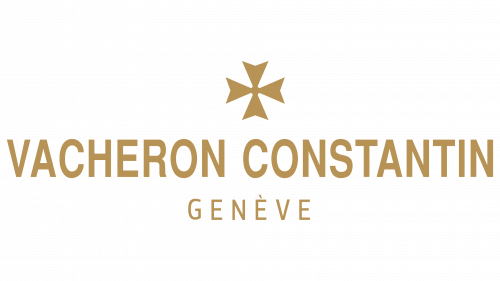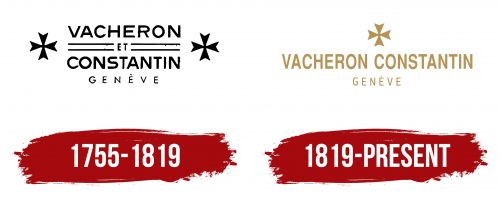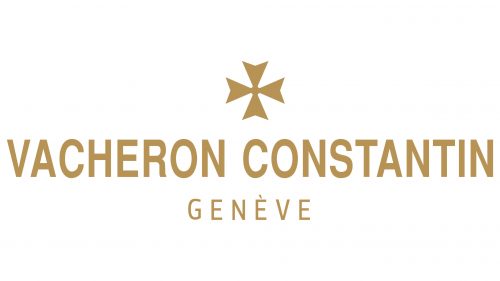The Vacheron Constantin logo embodies a commitment to traditions preserved over the centuries. The brand, known for its craftsmanship and expertise, has become a symbol of true luxury. Elegant design and meticulous attention to the smallest details have made it possible to use gold as an important element of the company’s visual identity. The entire identity emphasizes the exceptional quality and prestige accompanying the brand’s name throughout its centuries-old history.
Vacheron Constantin: Brand overview
The history of Vacheron Constantin began in 1755 when Jean-Marc Vacheron, a young watchmaker from Geneva, founded his workshop. At the time, Geneva was already known as a center for watchmaking, and Vacheron was eager to continue this tradition. His skill and commitment to precision quickly established him as one of the city’s leading watchmakers.
Initially, Vacheron’s workshop focused on producing intricate pocket watches, paying special attention to the movements’ appearance and precision. Vacheron was one of the first to engrave designs on watch mechanisms, a practice that later became a defining feature of the brand.
In 1785, Jean-Marc’s son, Abraham, took over the company. Under his leadership, the business continued creating fine timepieces, successfully navigating the challenges of the French Revolution and Napoleonic Wars.
A major turning point came in 1819 when Jacques-Barthélemy Vacheron, the founder’s grandson, invited François Constantin, a talented businessman, to join the company. This partnership led to the company’s new name: Vacheron et Constantin.
François Constantin’s expertise in international sales was key to the business’s growth. His motto, “Do better if possible, and that is always possible,” became a guiding principle for the company.
In 1839, the company hired Georges-Auguste Leschot, a gifted watchmaker, who developed a system for standardizing watch parts. This allowed the business to increase production and improve quality without losing the uniqueness of each timepiece.
The 1860s were a period of technological progress for the brand. In 1862, after joining the Association for Research on Antimagnetic Materials, the company produced the first anti-magnetic watch.
In 1880, the brand registered its famous Maltese cross symbol, which has since become a hallmark of quality and precision.
The early 20th century brought new challenges and opportunities. The company opened its first boutique in Geneva in 1906 and continued to expand globally, further establishing its reputation as a luxury watchmaker.
The 1920s and 1930s were marked by the creation of extraordinary timepieces, including one of the most complicated pocket watches ever made, commissioned in 1929 for King Fuad I of Egypt.
While production slowed during World War II, the business produced watches for military use.
The brand experienced a renaissance in the 1950s. To mark its 200th anniversary in 1955, the company released one of the world’s thinnest watches. Other notable models from this period include the Turnograph and Chronometer Royal.
The 1970s were a challenging time for the Swiss watch industry due to the “quartz crisis,” but the company remained innovative, introducing several unique models, including the 222, designed by Jürg Huessler.
The brand joined the Richemont Group in 1996, opening up new avenues for growth.
The 2000s saw several important milestones. 2004, the company expanded its manufacturing operations with a new facility in Geneva. To celebrate its 250th anniversary in 2005, the brand introduced the Tour de l’Ile, one of the most complicated wristwatches ever made.
In 2015, the company unveiled the Reference 57260, the world’s most complex mechanical watch, featuring 57 complications.
The business developed key collections like Overseas, Traditionelle, and Patrimony in the following years, blending modern technology with traditional craftsmanship. As of 2023, the company remains one of the world’s most prestigious watchmakers, known for exceptional craftsmanship and intricate mechanical designs. The brand continues producing elaborate, classic timepieces, showcasing the finest watchmaking artistry.
The company’s story is one of an enduring pursuit of watchmaking perfection. For over 265 years, the brand has remained true to its founder’s values of quality, innovation, and artistic excellence, growing from a small workshop in Geneva to a globally recognized name in luxury watches.
Meaning and History
What is Vacheron Constantin?
This is one of the oldest watch companies in the world, renowned for producing exquisite watches that blend classic design with cutting-edge complexity. The brand is known for its meticulous attention to detail, which is evident in the fine hand-finishing of every part, including those that remain unseen. The collection includes intricate masterpieces and ultra-thin wristwatches, all bearing the prestigious Geneva Seal. The company’s workshop, Les Cabinotiers, creates custom models for the most discerning collectors, surpassing traditional standards of watchmaking artistry. Alongside Patek Philippe and Audemars Piguet, the brand is considered part of the “Holy Trinity” of Swiss watchmaking.
1755 – 1819
The first Vacheron Constantin emblem represents the name divided by two horizontal lines, with Maltese crosses at the ends. The words are written in a thin, uppercase, sans-serif font, giving the logo clarity and simplicity. The surname Vacheron belongs to the brand’s founder, Jean-Marc Vacheron, and the name Constantin was added after François Constantin joined the business in 1819, becoming a partner to the founder’s grandson. The names are united by the French conjunction “Et,” emphasizing the connection between two key figures in the company’s history.
The Maltese crosses at the ends of the lines are not symbols of the order, as might seem at first glance. They are cross-shaped components from watch mechanisms used to regulate spring tension. This logo element highlights the brand’s craftsmanship and dedication to mechanical precision. The symbol was officially registered with the Swiss Federal Office of Trademarks in Bern in 1880, confirming the importance of the brand’s mechanical traditions.
Below the logo, in a thin font, the capital of Switzerland is indicated, symbolizing respect for Swiss watchmaking traditions and emphasizing the location of the company’s first workshop.
1819 – today
The emblem was transformed into a refined and concise symbol, with a cross at the center—a mark of the highest quality, embodying the brand’s pursuit of perfection. Below is the text with the brand name, where the surnames Vacheron and Constantin are presented on the same level, highlighting the important role of François Constantin in the company’s development and emphasizing his contribution. At the bottom, the name of the city where the brand was founded is indicated, emphasizing its origin and connection to Swiss watchmaking traditions. The gold color used for the inscriptions symbolizes luxury and the high status of the brand, underscoring its prestigious position and reputation in the world of watchmaking. This logo expresses the brand’s unwavering commitment to high standards and the pursuit of excellence in every product.






